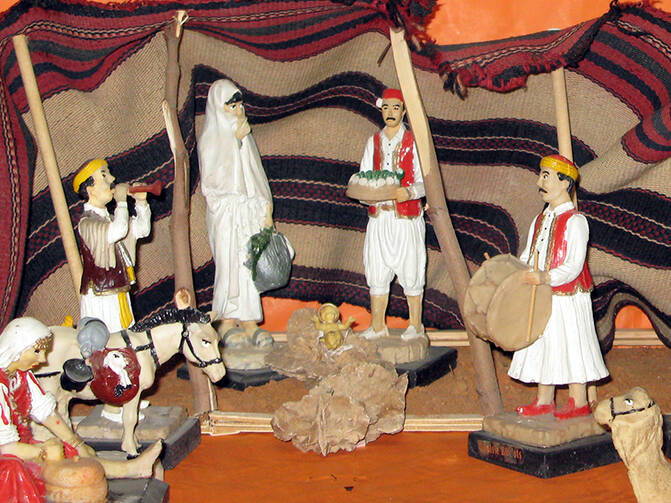After political outcry and personal threats, an Italian priest has replaced a Christmas Nativity scene that critics said depicted Mary, the mother of Jesus, with a Muslim body covering.
The Rev. Franco Corbo, a 76-year-old pastor from the southern town of Potenza, was the subject of a nationwide backlash on TV and social media and received hundreds of abusive telephone calls at his parish as a result of his Nativity scene.
The characters, including Mary, Joseph and the baby Jesus, were originally shown in Tuareg costumes worn by tribes from the Sahara desert but have now been replaced by African figures from Senegal.
In a Facebook post, the leader of the anti-immigrant Northern League, Matteo Salvini, called the pastor’s actions an act of “madness”:
“The last thing we needed was the ‘Muslim Nativity Scene’ from this parish priest, for whom ISIS is substantially our fault, the Israelis are ugly and evil, and if you dislike the MADONNA IN A BURQA it is YOUR fault for being closed-minded and a fanatic.”
But the priest said the Nativity scene reflected the clothing of Tunisia.
“The holy family was wearing Arab costumes to represent cultural openness and send a message of peace to all cultures,” he said.
He reiterated that the figure of Mary was not wearing a burqa.
“The burqa is black and covers the whole body except for the eyes,” he said. “The statue had a white shawl and a white dress and the face was visible.”
Corbo said his message had been misinterpreted by the media and insisted the characters were not Muslim even though they wore traditional costumes.
Walls surrounded the Nativity scene and above it the priest included the message “Let’s build bridges, not walls.”
For 50 years Corbo said he had drawn on political themes for his annual Nativity scene at his parish of Sts. Anne and Joachim in Potenza.
In previous years he has presented characters affected by earthquakes, environmental disasters and economic exploitation. One year he used the Nativity scene to depict the plight of the “desaparecidos,” those abducted and killed during the dictatorship in Argentina in the late 1970s and early 1980s.
“There is so much ignorance,” he said. “The Nativity scene is designed to confront the problems of our time. This year we wanted to deal with the 65 walls that have been built in the world. The most scandalous is the wall built by the Israelis to block the Palestinians.
“Building walls is easy. Creating dialogue is a little difficult.”
(Josephine McKenna is RNS’ Vatican correspondent)








